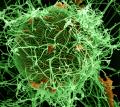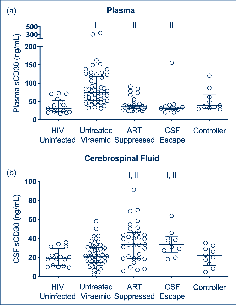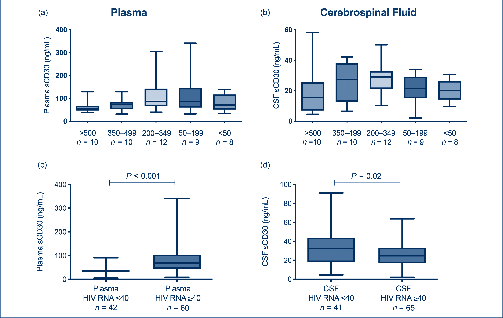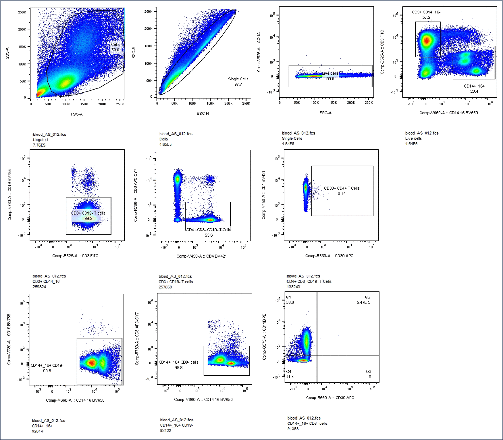
Cerebrospinal fluid soluble CD30 elevation despite suppressive antiretroviral therapy in individuals living with HIV-1
| Author List |
|---|
| Michael J Peluso |
| Cassandra Thanh |
| Cecilia A Prator |
Abstract
Objectives: The aim of this study was to assess soluble CD30 (sCD30), a protein that colocalises with HI V-1 RNA and DNA in lymphoid cells and tissues, in cerebrospinal fluid (CS F) as a marker of HI V-1 infection in the central nervous system (CNS ). Methods: This was a cross-sectional study using archived samples from two clinical cohorts. Soluble CD30 concentrations were measured in paired CS F and plasma from untreated viraemic individuals (n=52), individuals on suppressive antiretroviral therapy (AR T) (n=33), HI V-1 controllers (n=10), participants with CS F HI V-1 ‘escape’ (n=11) and controls without HI V-1 infection (n=16). Nonparametric tests were used to compare levels across groups and evaluate correlations with HI V-1 RNA , CS F neurofilament light chain protein (NFL) and neopterin. Results: Compared with controls (median 30 ng/mL, interquartile range [IR Q] 23–50), plasma sCD30 levels were elevated in viraemic participants (75 ng/mL, 52–116; P<0.001), but not in those on suppressive AR T (38 ng/mL, 32–62). In contrast, CS F sCD30 levels were elevated in AR T-suppressed individuals (34 ng/mL, 19–46; P=0.001) and in those with CS F ‘escape’ (33 ng/mL, 27–40; P=0.004) compared with controls (18 ng/mL, 11–23), but not in untreated viraemic individuals. No association was observed between CS F sCD30 and plasma HI V-1 RNA , concurrent or nadir CD4+ T cell count, duration of infection or plasma sCD30. CS F sCD30 correlated with CS F NFL (r=0.34, P=0.001). Conclusions: In contrast to plasma, sCD30 levels are elevated in the CS F of individuals with HI V-1 infection who are on suppressive AR T. Elevated levels of sCD30 in the CS F may be an indicator of persistent CNS HI V-1 infection, although the mechanism underlying this elevation warrants further investigation.
Published
Article Category
HIV Treatment
Article Type
Original research
Posted Date
20-02-2020



